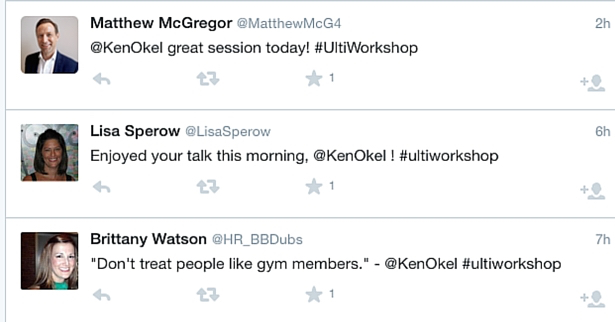 Personal productivity challenges do not exist in a vacuum, which is what I’ve learned from performing my People Are Not Balloons demonstration. It’s a part of my presentations, where I compare increasing an employee’s workload to blowing up a balloon.
Personal productivity challenges do not exist in a vacuum, which is what I’ve learned from performing my People Are Not Balloons demonstration. It’s a part of my presentations, where I compare increasing an employee’s workload to blowing up a balloon.
As you’ll see in the clip below, we start with a balloon that has some air in it but is not overinflated. I then start adding more and more air, representing all of the unexpected requests that can be made, creating stress and challenges.
In my scenario, the employee is a valued colleague but someone who is flirting with burnout, should the extra demands continue to grow. Often that the employee then either leaves the job or sees his or her performance drop significantly, in trying to get all of the work done.
In my talks, these two scenarios are represented by either the balloon popping or having all of the air rush out of it, as it deflates, flying across the room.
Audiences enjoy this demonstration as it gives a visual lesson for how increasing an employee’s workload can come with consequences. I’m then able to talk about ways employees and supervisors can work together to avoid these negative outcomes.
What I’ve leaned is how the challenge between the supervisor and the employee can affect an entire organization.
As I’m inflating the balloon, I start to see some members of the audience become uncomfortable. They put their fingers in their ears in anticipation of the balloon popping. That possibility makes them nervous and distracts them. This is true even for people who are far away from the stage.
For this reason, what I’ve learned is it’s best not to have the balloon explode. Just releasing the air gets the point across and can lighten the mood.
In your business, are coworkers anticipating a pop during busy times? When others are slammed with extra work and demands, are they metaphorically putting their fingers in their ears?
By giving more work to one person, you may have created a distraction for everyone. Stress can travel like a virus.
Unexpected requests and demands will never stop but these tips can help protect group productivity during busy times:
Addition and Subtraction
When it comes to the supervisor/employee relationship, what I’ve learned is the boss doesn’t always know much time certain tasks take for the employee to complete. On the other hand, some employees are reluctant to admit they’re being overwhelmed with requests and feel they must perform magic to get it all done.
This suffering in silence needs to end. Strong lines of communication allow both parties to honestly assess a growing workload and make decisions about whether it all needs to be completed.
This prevents a situation where sub par work becomes the norm due to unrealistic demands.
Solve as a Group
While you often ask a top performer to take on some extra work, consider allowing others to help that person. Obviously, they’ll likely have work of their own to do but they may be eager to support a coworker and can adjust their workloads accordingly.
This may be having a backup perform someone’s task, freeing up time for that person to take on the new work. Give people this opportunity to create a culture of teamwork.
Consider the Deadline
Some urgent requests are more urgent that others. While I believe in honoring deadlines, sometimes they are selected in an arbitrary fashion. It may be possible to move it back.
For leaders, you need to be careful not to agree to a deadline until you can find out how busy your team is. You may want to say something like, “I want to make sure we’re able to give this request the attention it deserves. Your deadline sounds good but we may need move it back slightly. Is it okay for me to check with my team and get back to you, so we make this a win-win situation for everyone?”
Your goal should not be to meet a deadline with a negative outcome, representing either poor quality of work or a burned out employee.






